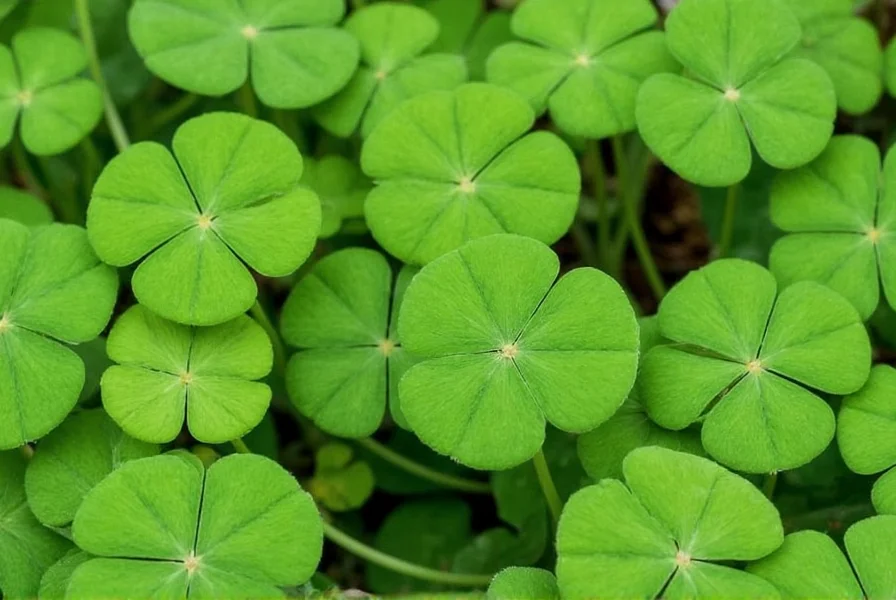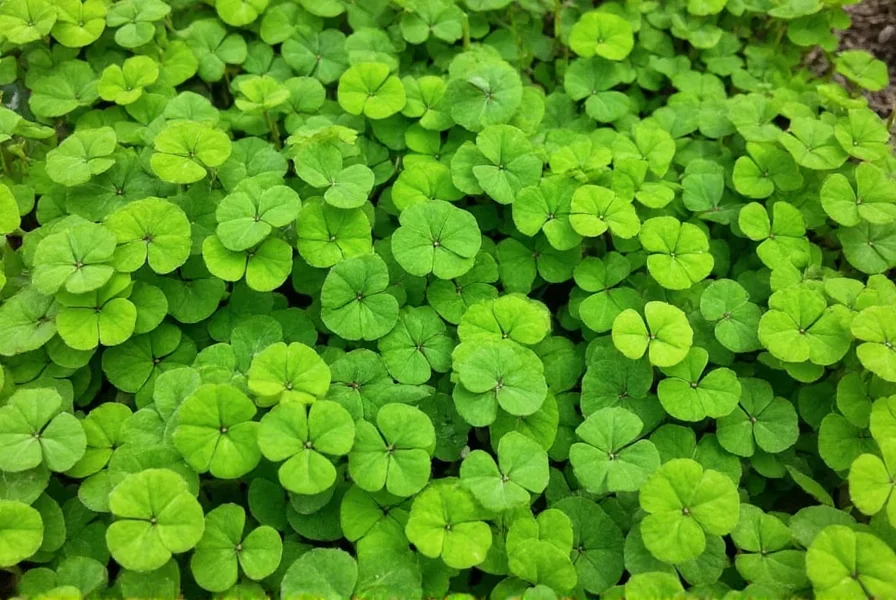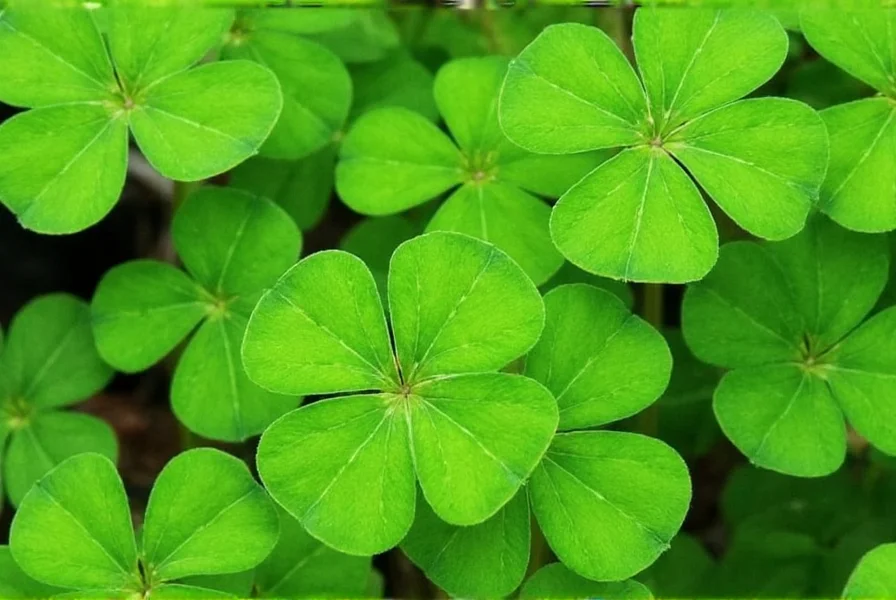Dutch clover has gained significant popularity among environmentally conscious gardeners seeking sustainable alternatives to conventional turf grass. This resilient legume offers remarkable adaptability across various soil types while naturally enriching the earth through nitrogen fixation. Understanding its specific characteristics helps gardeners determine if it's the right choice for their particular landscape needs.
Understanding Dutch Clover Characteristics
Dutch white clover (Trifolium repens) represents a specific cultivar of white clover distinguished by its compact growth habit. Unlike standard white clover varieties that can reach 12 inches or more, Dutch clover maintains a modest 4-8 inch height, making it particularly suitable for lawn applications where frequent mowing proves undesirable. The plant features trifoliate leaves with characteristic white markings and produces small white flower heads that attract beneficial pollinators.
One of Dutch clover's most valuable agricultural properties is its nitrogen-fixing capability. Through a symbiotic relationship with rhizobia bacteria in root nodules, Dutch clover converts atmospheric nitrogen into a plant-available form, reducing or eliminating the need for synthetic fertilizers. This natural process improves soil fertility not only for the clover itself but also for neighboring plants.
| Characteristic | Dutch Clover | Standard White Clover | Microclover |
|---|---|---|---|
| Height | 4-8 inches | 8-12 inches | 3-6 inches |
| Leaf Size | Medium | Larger | Smaller |
| Flowering | Moderate | Abundant | Minimal |
| Traffic Tolerance | Good | Excellent | Fair |
| Shade Tolerance | Moderate | Good | Moderate |
Practical Benefits of Dutch Clover Lawns
Gardeners increasingly choose Dutch clover seed for lawns due to its numerous environmental and practical advantages. The plant demonstrates remarkable drought tolerance once established, requiring approximately 30% less water than traditional Kentucky bluegrass. This water conservation aspect makes Dutch clover particularly valuable in regions experiencing water restrictions or for those seeking sustainable landscaping solutions.
Unlike conventional grass lawns that demand regular nitrogen applications, Dutch clover naturally fertilizes itself and surrounding plants. Homeowners who transition to Dutch clover lawns typically eliminate their need for synthetic fertilizers, reducing both costs and environmental impact. The dense growth habit also suppresses many common lawn weeds, minimizing the need for herbicides.
For those wondering how to plant Dutch clover seed successfully, proper soil preparation proves essential. Begin by removing existing vegetation and loosening the top 2-3 inches of soil. Dutch clover prefers slightly acidic to neutral pH (6.0-7.0), so soil testing before planting helps determine if amendments are necessary. The ideal best time to plant Dutch clover falls within spring (after last frost) or early fall when temperatures range between 50-75°F.
Planting and Establishment Guidelines
Successful establishment of Dutch clover begins with appropriate seeding rates. For new lawns, use 2-3 pounds of seed per 1,000 square feet. When overseeding existing lawns, reduce the rate to 1-2 pounds per 1,000 square feet. The tiny seeds require only shallow planting—press them into the soil surface without covering more than 1/8 inch deep.
Maintaining consistent moisture during germination proves critical for Dutch clover seed germination rate success. Keep the soil surface damp (not soggy) for 7-10 days until seedlings emerge. Dutch clover typically germinates within 7-15 days depending on soil temperature and moisture conditions. Avoid walking on newly seeded areas until plants reach 2-3 inches in height.
For those considering an organic lawn with Dutch clover, understand that this plant works exceptionally well in mixed grass-clover lawns. Combining Dutch clover with fine fescues or other shade-tolerant grasses creates a resilient, low-maintenance lawn alternative. The clover fills in thin areas, fixes nitrogen for the grass, and maintains green color during dry periods when grass might go dormant.
Managing Dutch Clover in Various Conditions
Dutch clover performs admirably in partial shade, making it suitable for areas where traditional grass struggles. While it prefers full sun, it tolerates 4-6 hours of direct sunlight daily better than many turf grasses. For those specifically interested in growing Dutch clover in shade, consider mixing with shade-tolerant grass varieties to create a balanced lawn ecosystem.
Maintenance requirements for Dutch clover lawns differ significantly from conventional grass. Mowing remains optional but recommended at 3-4 inch height if maintaining a traditional lawn appearance. Many homeowners choose not to mow Dutch clover lawns, enjoying the natural look and pollinator-friendly flowers. If flowering becomes excessive, a single mid-season mow typically reduces bloom production.
Understanding Dutch clover seed coverage rate helps prevent overplanting. One pound of Dutch clover seed covers approximately 500-750 square feet when establishing a pure stand. In mixed lawns, adjust rates downward accordingly. Remember that Dutch clover spreads through stolons (above-ground runners), gradually filling in bare spots over time.
Common Challenges and Solutions
While Dutch clover offers many benefits, certain challenges require attention. In extremely hot, dry conditions, Dutch clover may go dormant but typically recovers with rainfall or irrigation. During establishment, watch for potential competition from aggressive weeds until the clover forms a dense mat.
Some gardeners express concern about clover attracting bees. While Dutch clover flowers do attract pollinators, the risk of stings remains minimal as bees focus on nectar collection rather than defense when undisturbed. Mowing before peak flowering reduces this concern for those with bee allergies.
For erosion control applications, Dutch clover proves exceptionally valuable on slopes and banks. Its fibrous root system binds soil effectively while the low growth habit withstands moderate water flow. When using Dutch clover seed for erosion control, consider combining with grasses for immediate stabilization while the clover establishes.

Comparing Clover Varieties for Lawn Applications
Understanding the differences between available clover varieties helps gardeners make informed decisions. While Dutch white clover represents a traditional option, newer cultivars like microclover offer refined characteristics for specific applications.
The question of Dutch white clover vs microclover frequently arises among gardeners. Microclover (such as 'Pirouette' or 'CC-1000' varieties) features smaller leaves, reduced flowering, and even lower growth habit (3-6 inches). This makes microclover ideal for formal lawn settings where minimal flowering and a grass-like appearance are priorities. Dutch clover, with its slightly larger leaves and more noticeable flowers, provides better pollinator support and slightly greater traffic tolerance.
For agricultural applications, Dutch clover serves effectively as Dutch clover as living mulch in orchards and vineyards. Its low growth habit prevents competition with tree roots while providing weed suppression, moisture retention, and soil enrichment benefits. In vegetable gardens, Dutch clover pathways reduce mud and erosion while adding nitrogen to adjacent planting beds.

Long-Term Management and Sustainability
Dutch clover lawns typically remain productive for 3-5 years before requiring reseeding or renovation. Unlike grass lawns that thin over time, clover may become too dense, potentially crowding out desirable grasses in mixed lawns. Periodic aeration helps maintain balance in mixed grass-clover systems.
Winter hardiness represents another strength of Dutch clover. It reliably survives winters in USDA zones 3-10, going dormant in colder regions but returning vigorously in spring. In southern climates, Dutch clover remains green year-round with adequate moisture.
For those committed to sustainable landscaping, Dutch clover offers a practical pathway toward reducing lawn maintenance while enhancing ecological benefits. Its ability to thrive with minimal inputs makes it an excellent choice for eco-conscious homeowners seeking beautiful, functional outdoor spaces that support local ecosystems.











 浙公网安备
33010002000092号
浙公网安备
33010002000092号 浙B2-20120091-4
浙B2-20120091-4